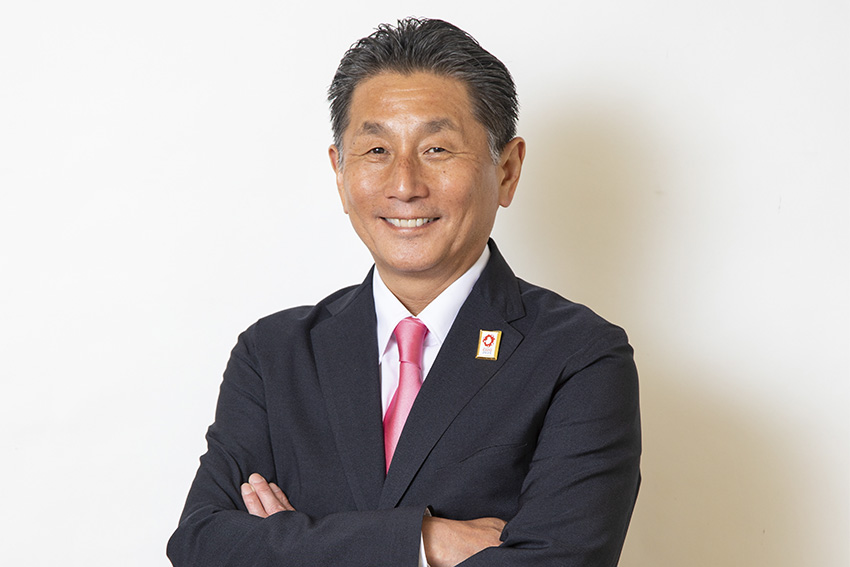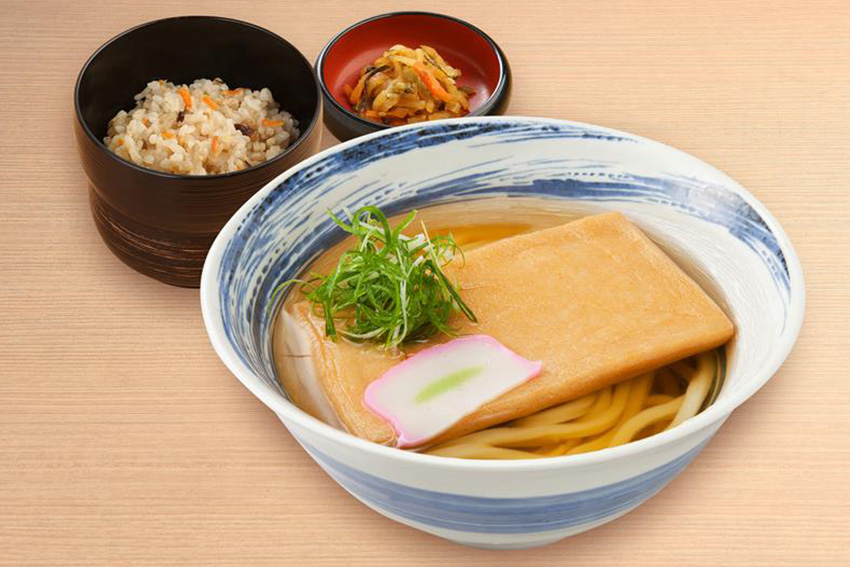By operating a wide range of restaurant and food-related brands, Gourmet Kineya caters to a global audience, meeting the needs of people with satisfying food products and services.

For 11 consecutive years, we’ve seen Japanese food-related exports increase. If we look at up to 2023, they reached JPY 1.45 trillion. This has been consolidated overseas by the growing popularity of Japanese restaurants, which grew from 55,000 in 2013 to more than 200,000 today. How do you account for this substantial rise in Japanese food exports? Why is now the time for washoku to shine internationally?
Before COVID-19 hit, the Japanese government set policies to strengthen tourism in Japan, which led to increased inbound tourism. While COVID reduced this significantly, we are now in the early stages of inbound recovery, with 2024 numbers reaching record highs. Many inbound tourists look forward to enjoying Japanese food when they come to Japan.
I think this is partly due to the UNESCO designation of Japanese washoku as a UNESCO World Heritage Culture, and I’ve found it interesting that the world seems to think of ramen as Japanese food when its roots come from Chinese food. Take curry, for example; there are many varieties worldwide, including Indian curry, Japanese curry, Thai curry, and many more. We’ve always thought that Japanese curry was an adaptation of Thai or Indian curry, but customers abroad have always considered Japanese curry as an original invention. We feel that people from overseas recognize Japanese food even outside of Japan. I think those are contributing factors when considering expanding restaurant numbers outside of Japan and exports.
In 2024, Japan expects 37 million visitors to come to Japan, and many want to experience the deliciousness of Japanese food, with experts predicting this trend will continue in 2025. Your financial results showed a 23% increase this year, resulting in revenue of JPY 37 billion. To what extent do you believe there is a link between your financial success and increased inbound tourism?
Our stores are located where there are a lot of people, such as airports, train stations, shopping centers, and department stores. Inbound tourists used to go around Asakusa in Tokyo or Kyoto, but now they are everywhere in Japan.
Shops in Kanazawa, for example, are performing very well, and we’ve seen a lot of inbound tourists visit this location. This is in addition to Hokkaido, Sapporo City, Okinawa, and others. In particular, in Okinawa, we have a restaurant at the airport where there are a lot of inbound tourists. These tourists are helping our sales to grow.
How are you looking to take advantage of these tourists in 2025? Are you looking to change your strategy and take more advantage of tourists to grow your sales?
Next year, we will see the big Osaka Expo, so the hope is that there will be a lot of tourists in the area. The government will also be looking to increase tourism goals for 2025 due to the expo.
Right now, Japan’s population is 125 million, but this is expected to drop below 100 million by 2050, with experts even expecting the population to be around 65 million by 2100. This presents two problems: a diminished domestic base and increased competition over a decreasing pool of labor. What are some of the opportunities and challenges this demographic shift has created for your company? To what extent do you believe internationalization is the solution to mitigate the issues resulting from this demographic shift?
You are correct. There has been a change in the demography in Japan, where the population has been declining for the last several years. Slowly but steadily, the population is dropping. As you mentioned, the Japanese government is trying to figure out countermeasures, but the severity will increase. This requires Japan to invite workers from overseas to come here.
Three years ago, our company started a Japanese language school, approximately 100 students are currently learning Japanese. Our main students are from the ASEAN region. The purpose of launching this school was for students to come to Japan and learn Japanese, then contribute not only to Japan but to their home countries as well. Students will study during the daytime and do part-time jobs at our restaurants in the afternoons or evenings. The minimum wage in Japan recently increased to JPY 1,054. However, this is not enough to cover living costs for our foreign students, so that is why we offer part-time wages of JPY 1,500, which is well above the national minimum. Students can feel safe with that since it will cover their cost of living, meaning they can concentrate fully on their studies.
It was in Spring 2024 that we actually had our first student graduate from this school. One-third of the students have joined our company. Other students have joined Japanese universities and specialized schools. Although they go to other schools, many continue to work for our company. In the future, we are planning to increase the number of students in attendance up to around 300 students.
Your company was founded in 1967, and now you have over 400 restaurants 96 franchise stores, and you have businesses including in-flight meals, frozen foods, store operators, and you even provide consulting services. What do you believe is your company’s core strength?
Our core business is the restaurant business, and as an entire group, we want to be the kind of company that cultivates people. and this, of course, includes our Japanese language school. I always tell my employees that the most important factor in business is the people or the human resources. As for money, you can get it from a bank, but you can’t get talented people from a bank.
Your first international expansion was in the US in 2011, so you’ve now been running operations overseas for 13 years. In the Japanese restaurant business, the model is a centralized kitchen where base ingredients are distributed to all other restaurants. How are you able to replicate this business model in the US? Have you developed partnerships overseas, or do you do everything in-house?
In the domestic market, we opened our first restaurant 53 years ago in 1971, and the concept was to cook at each restaurant. The general theory for chain restaurants anywhere in the world is to use a central kitchen, but our founder thought differently. Now, at each of our restaurants, we prepare the dashi and the noodles at the location rather than using a centralized kitchen. Training plays a big part here. However, due to the decreasing population, we have looked into overseas markets, starting about ten years ago, and since then, we’ve slowly expanded our business overseas. Looking back at our overseas business now, I can’t say it has gone well.
Overseas, we have tried to replicate the Osaka dashi. However, the base Kaeshi is a soy sauce-based seasoning made by simmering soy sauce, mirin, and sugar. It's used as a base for making soba or udon soup stock) is provided from Japan. After COVID-19, our operations in the UK and the Philippines started operating again, and I think we’ve learned some valuable lessons in terms of our mistakes over the years. Our locations in London are run as a franchise, and the company as a whole is considering options for overseas operations in the future. In November 2024, we actually opened our fifth store in London.

Are all of your franchise restaurants overseas?
As of now, yes, but we are cooperating with partners on what to do in the future.
What are the next locations you want to tackle overseas?
In the UK, we are doing very well, so we would like to centralize our strategy. The Philippines started operations in March 2024, and we have a very good partner there. We want to consider the ASEAN region as the center of the partnerships, and from there, we are considering options for moving forward. In US, and Hong Kong, We have a reliable long-term partner, we want to develop the relationship and create some channels to utilize it in the future.
Under your group’s umbrella, you have a number of different restaurant brands, including Kineya, which is your udon brand; Sojibo, a soba noodle brand; and Gourmet, your Western-style sandwich brand, along with many other brands and cuisine styles. Which of your many restaurant brands do you believe has the greatest potential for market growth in the future?
We don’t have any soba restaurants overseas yet, so we are considering formats to make the model acceptable in overseas markets. If we were to copy the Japanese style overseas, while some restaurants would be successful, it would be difficult to maintain this success as a chain. Our restaurants in the UK are actually quite different from those in Japan.
What are the differences?
A key difference is the thickness of the noodles. We did have a restaurant in Shanghai, but unfortunately, that has now closed. The former owner actually informed us that Chinese customers did not like thick noodles. In the UK, we have franchise restaurants, and the owners have unique ideas. They mentioned that egg noodles are very well-received in the UK.
Is customization something you offer, for example, the thickness of the noodles or the broth? Is the UK ready for this level of customization?
An important lesson we’ve learned is the need to localize, particularly when developing products. The tastes really depend on the country.
Could you tell us about your Oragasoba concept, which specifically targets female customers? A lot of soba and udon concepts are very masculine and are associated with the salaryman culture of Japan. What new experiences are you putting into your restaurants to make them more attractive to females?
It has been a struggle so far, and so we are having the brand development team spend their resources to adapt restaurants to be more suitable for women. We found a female soba chef and have contacted her to join us.
Imagine that we come back on the last day of your presidency and have this interview all over again. What goals or dreams do you hope to achieve by the time we come back for that new interview?
I hope that I’ve built the foundation for our overseas expansion by then.
For more information, please visit their website at: https://www.gourmet-kineya.co.jp/
0 COMMENTS